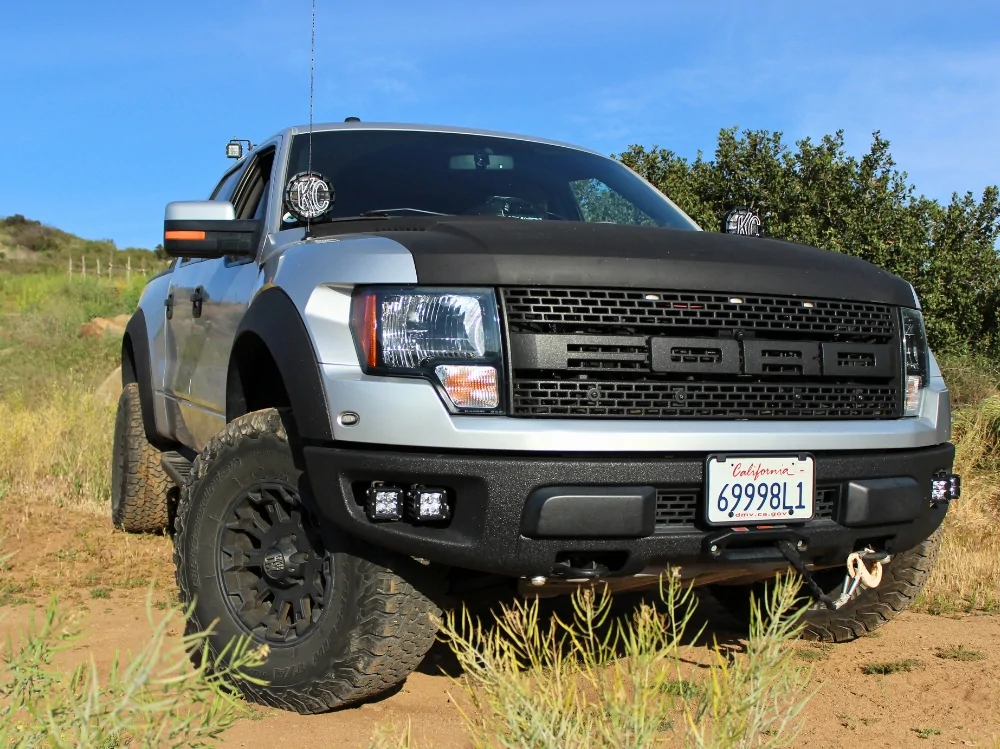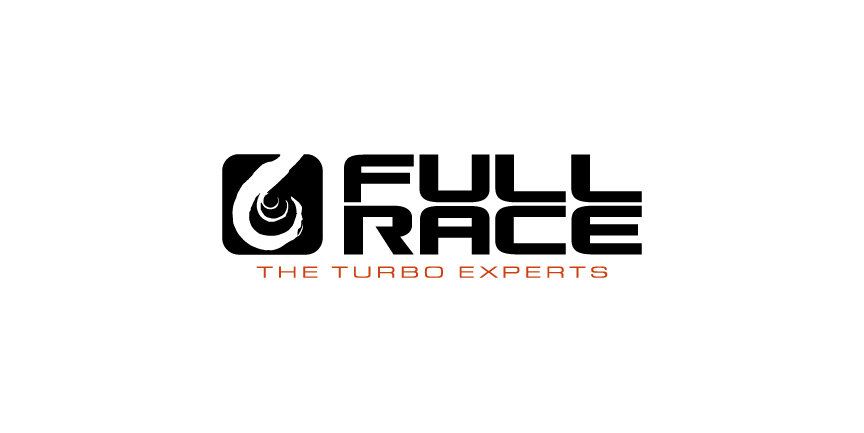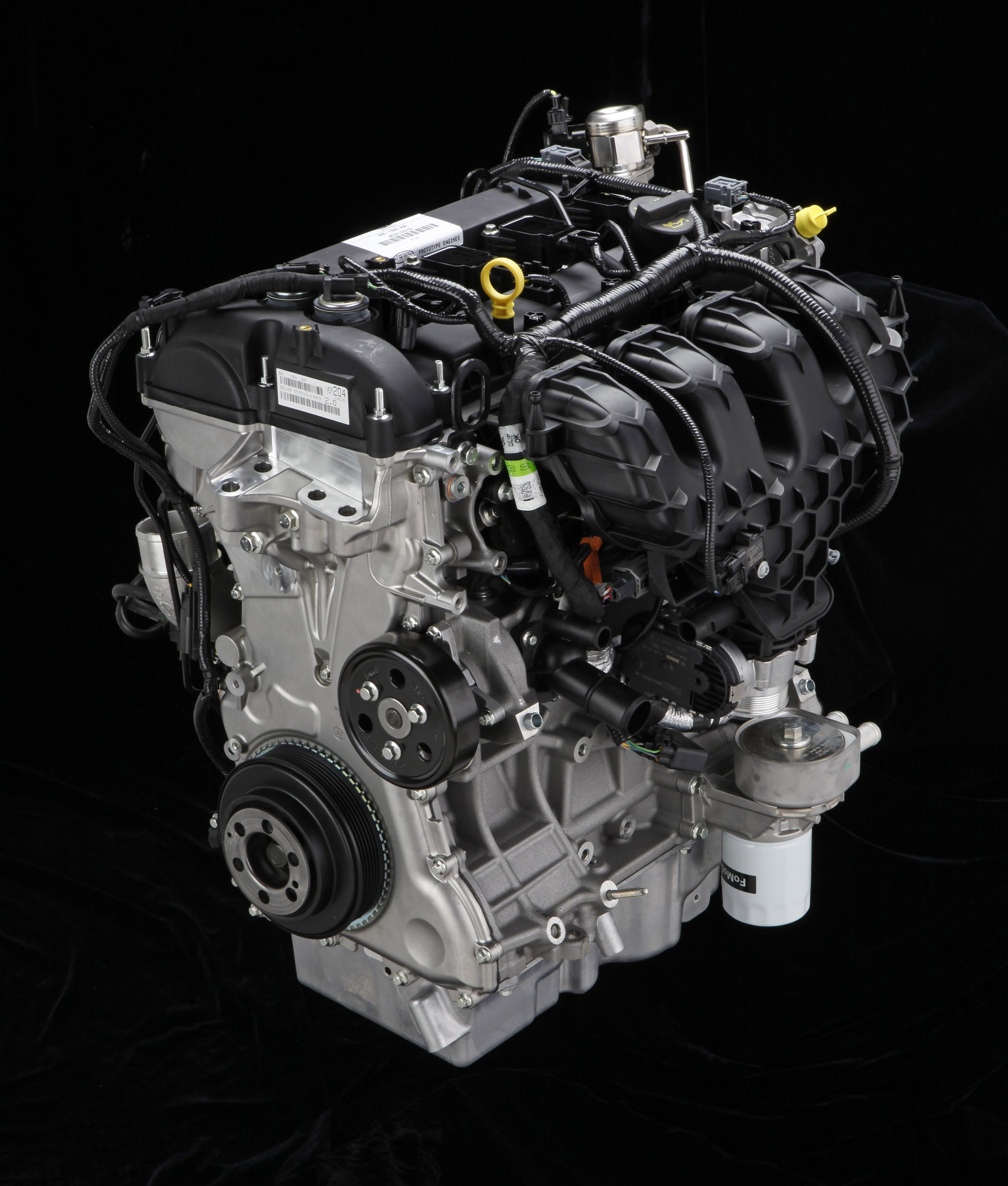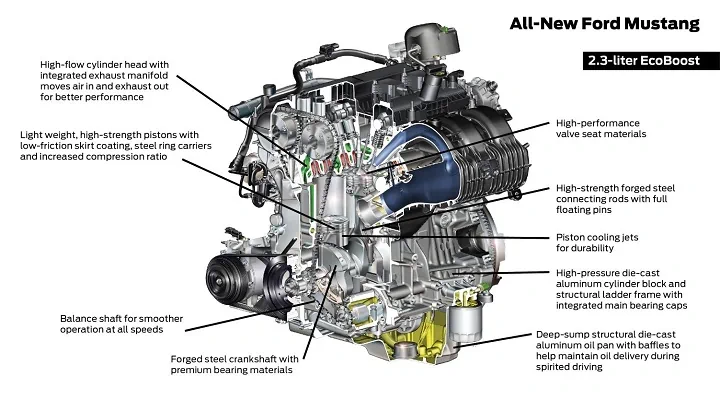What is Ecoboost? 3.5L Ford Ecoboost V6 Generations Explained

WHAT IS ECOBOOST?
3.5L V6 ECOBOOST GENERATIONS EXPLAINED
The Ford EcoBoost engine, particularly the 3.5-liter variant, stands as a testament to the advancements in automotive technology. Ford's EcoBoost series, introduced in 2009, revolutionized the concept of power and efficiency in engines. The 3.5-liter EcoBoost, in particular, has evolved across several generations, each marked by significant technological improvements. This article delves into the developmental journey of the 3.5L Ford EcoBoost, exploring its inception, the distinguishing features of each generation, and how these innovations have shaped its performance and reliability. From its initial launch to the latest iteration, the 3.5L EcoBoost demonstrates Ford's commitment to combining power with fuel efficiency, reflecting the evolving trends and demands of the automotive industry.


FORD ECOBOOST 3.5L GEN 1
Overview:
In 2007 Ford Introduced an all-new turbocharged V6 engine to their lineup. Designed to match the power of the outgoing 6.0L V8 engine while producing 15% better fuel economy, these turbocharged Ecoboost engines made good on their promise. Originally dubbed “TwinForce” when introduced in the 2007 Lincoln MKR Concept Vehicle, these engines proved reliable and powerful.
After being renamed to “Ecoboost” with the release of the 2008 Lincoln MKT concept, the engine first saw production in May of 2009 at Cleveland Engine Plant #1. The first commercially available vehicles to feature the all-new 3.5L Gen1 Ecoboost V6 were the 2010 Lincoln MKS, Lincoln MKT, and Ford Flex. Eventually the Gen 1 Ecoboost V6 was fitted to other Ford vehicles including the Ford Transit, F-150, Expedition, Taurus, and Explorer Sport. The engine was also used in Lincoln MKT, Lincoln MKS and Navigator. 2011 Marked the debut of the 3.5L Ecoboost Gen 1 engine in the F-150, and 2019 Marked the last year of use in the Ford Transit vans.
Technical Details:
The Gen1 Ecoboost V6 3.5L starts with the Duratec 3.5 V6 aluminum engine block. The engine features gasoline direct injection at high pressure (up to 2150 PSI) for maximum fuel efficiency. Transverse mounted version of the Gen1 Ecoboost found in vehicles such as the Ford Taurus or Lincoln MKS featured twin Garrett Turbochargers and up to 11 PSI of boost. The F-Series trucks featured twin BorgWarner turbochargers tuned to produce 15 PSI of boost. Despite the added boost, the first generation Ecoboost V6 engines only require regular-grade gas, (but we recommend premium fuel for best performance.) Generation 1 engines feature a reliable forged crankshaft with 6 bolt mains. Steels rods attach to cast pistons, which feature a steel ring carrier and a coated skirt design. Oiling is handled by a gerotor oil pump with constant oil pressure. The shimless bucket valvetrain has proven to be exceptionally reliable. Finally, the timing system features a long primary timing chain and two secondary chains.
2011-2012 Gen1 F-150 Models had the smallest turbos with an integrated BOV on the turbo'd compressor housing. These trucks used the Hitachi fuel and timing systems. 2013-2016 F150s had larger turbos, an electronic BOV, and utilized Bosch fuel systems and Hitcahi timing systems. Finally, the 2017-2019 Gen1 retained all of the 2013-2016 features, but featured new 6r80 transmission tuning.
Applications:
- 2015– Ford Transit: 310 hp, 400 lb-ft of torque.
- 2010–2012 Ford Flex, Lincoln MKS, Lincoln MKT: 355 hp, 350 lb-ft of torque.
- 2010–2019 Ford Taurus SHO, Police Interceptor Sedan, Lincoln MKS, Lincoln MKT: 365 hp, 350 lb-ft of torque.
- 2013–2019 Ford Explorer Sport, Explorer Platinum, Flex, Police Interceptor Utility: 365 hp, 350 lb-ft of torque.
- 2011–2016 Ford F-150: 365 hp, 420 lb-ft of torque.
- 2015–2017 Ford Expedition/Expedition EL, Lincoln Navigator/Navigator L: 380 hp, 460 lb-ft of torque.
- 2016-2019 Ford Transit Van


FORD ECOBOOST 3.5L GEN 2
Overview:
Introduced for the 2017 Ford GT, the Second Generation 3.5L Ecoboost V6 was also used for the 2017-2020 F-150, 2018 Expedition and 2018 Navigator. The Ford GT version was capable of producing up to 647 hp. Also announced at the 2015 Detroit Auto Show was the 2017 Ford F-150 SVT Raptor, which would also be powered by an all-new second generation 3.5L twin-turbo Ecoboost V6. The Raptor version produced 450 horsepower, a considerable improvement from the previous V8 powered Raptor’s 6.2L 411 horsepower engine.
The new Gen2 Ecoboost V6 was standard in the 2017 F-150 Limited, and optional in other F-150 models. The 2017+ trucks also featured an all-new 10R80 10-speed automatic transmission developed in partnership with General Motors. The 2017+ F-150 version of the Gen2 Ecoboost produced 440 horsepower and 510 lb⋅ft of torque.
Technical Details and Improvements from Gen1 Ecoboost:
The Gen2 Ecoboost engine is completely different than the Gen1 engine. Despite having structurally similar bore spacing and stroke, the engines are not the same. The biggest change between Gen1 and Gen2 Ecoboost V6 engines was the introduction of additional port fuel injection. The increased horsepower rating of the 2nd Gen Raptor SVT 3.5L HO required additional fuel, but this also served to solve several common issues of the Gen1 Ecoboost. Most importantly, the port fueling prevented buildup on the back of the intake valves. Secondly, despite the additional fuel flow possible, the new fuel system was more efficient. The engine calibration allowed for the port and direct injection to operate separately or in conjunction with each other. At low RPM or low load the engine will operate on the port injectors only, while higher demands will activate the direct injection system. During cold start both fuel systems are active, reducing emissions due to DI’s inefficiencies due to poor fuel atomization. The Gen2 engines' fuel system operates at 160bar (2400psi)
The new Gen2 Ecoboost engine also received some upgrades to the BorgWarner turbochargers, including new electronic stepper-motor wastegates. The turbine wheels now featured MAR-M-247 Super-alloy material along with sharper blade angles, which increased efficiency and reliably improved performance. Boost was increased over the previous generation as well.
The variable camshaft timing system received some notable upgrades in this generation. The Gen2 ecoboost V6 switched from a single primary chain system to a stronger and more robust dual primary chain system. The chains themselves also received an upgrade, with thicker side plates. To accommodate the new dual chain system the crank gear was also upgraded to a dual drive sprocket. These upgrades reduced harmonics, and also increased strength to minimize the chain stretch that was common in the Gen1 3.5L Ecoboost engines. The cylinder heads received additional valvetrain upgrades including new hollow stem intae valves and sodium filled exhaust valves. The rockers and lifters were also upgraded to a similar design as the Gen2 Ford Coyote 5.0L engine.
The lower end of the engine was also updated, with increased compression from 10.0:1 to 10.5:1 on all models except the Ecoboost HO Raptor engine. Oil volume was also increased to support the single cooling piston oiling jet for additional cooling. The oil pump was converted to a variable pressure pump. Compression was adjusted to a lower 10.5:1 ratio in F-150 and 10:1 in Raptor to accomodate additional boost. Connecting rods are identical between the Gen1 and Gen2 engines. The undersides of the pistons underwent a significant redesign to better transfer heat back into the oil. The overall weight of the engine was reduced by 4 lbs with the changes outlined above. Finally, an auto start/stop system was added to decrease emissions during city driving.
Applications:
- 2017–2020 Ford F-150, 2018– Ford Expedition: 375 hp, 470 lb-ft of torque.
- 2018– Ford Expedition Platinum: 400 hp, 480 lb-ft of torque.
- 2021– Ford F-150: 400 hp, 500 lb-ft of torque.
- 2021– Ford F-150 PowerBoost Hybrid: 430 hp, 570 lb-ft of torque.
- 2017– Ford F-150 Raptor, 2018– Lincoln Navigator, 2019–2020 Ford F-150 Limited: 440-450 hp, 510 lb-ft of torque.




Resources
All ArticlesFor SHOP OWNERs
& KIT BUILDERs
Full-Race Motorsports is the most
trusted name in turbocharging.



